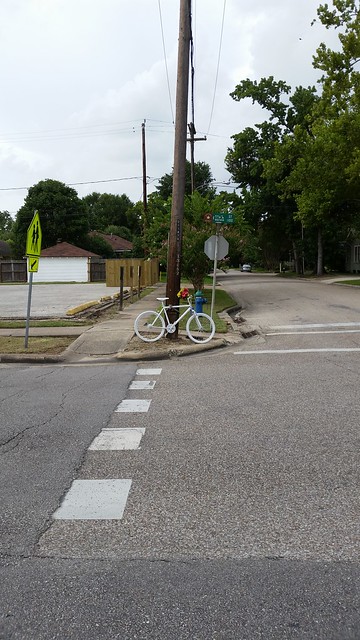Tuesday marked the official launch of San Antonio’s Vision Zero, a multi-national awareness and educational initiative that calls for zero traffic fatalities. It’s a lofty goal, but proponents of the plan say these deaths, especially those of pedestrians, are preventable accidents that can be systematically addressed with infrastructure and safety education.
Last year 54 pedestrians were killed while walking in San Antonio, an average of one death per week. To pay tribute to those individuals, 54 people stood on the steps of City Hall as Mayor Ivy Taylor, Council members, and City staff launched the initiative.
“We suffer human losses because of culture and public policy decisions that have resulted in the built environment we have today,” said Councilmember Shirley Gonzales (D5), who has long advocated for more City investment in complete street, or multimodal, infrastructure and led the Council’s backing of Vision Zero.
According to the ethos of Vision Zero, individuals and roadway design should share the burden of ensuring safe passage. Priority is often given to vehicles, leaving pedestrians and cyclists to fend for themselves in an environment built for tires and steel.
“We have a high number of traffic fatality rates because we have a fundamentally dangerous environment,” Gonzales said.
Aside from infrastructure like better sidewalks and safer street crossings, the City is looking into reducing speed limits to create a safer environment for those walking and bicycling.
“We’ve made and continue to make policy decisions and direct City staff to construct projects that keep everyone and every mode of transportation in mind,” Mayor Taylor said.
See here, here, and here for some background, and here for the city’s official plan. The basic idea here is that the way our streets are constructed now, it’s dangerous for anyone who isn’t in a car, and this is reflected in the number of accidents and fatalities involving pedestrians and bicyclists. This doesn’t have to be the way things are, it’s the way we currently choose to do them. If we do them differently, and think in terms of everyone who uses the streets and not just the cars, we could have fewer accidents and fewer deaths. That seems like a worthy goal, no? I look forward to seeing what kind of results they get, because that is how this will ultimately be judged. The Current has more, and you can sign petitions to bring this to Houston and Austin if you are so inclined. Streetsblog has more.

